Tips for Tips: How to Climb Finger Cracks
- April 2011
- Climb
Hey Steph-
I enjoy reading your blog and reading your advice/articles about crack climbing. I have been crack climbing for a month and with a lot of practice, I have gotten pretty comfortable with hand/foot/toe jamming, but finger cracks still humble me. Any general advice/tips you could give me on finger cracks would be treated as law.
Thanks,
Paul
Hi Paul,
The first step is to toprope finger cracks as much as possible. This will give you a good foundation for the climbing itself, without being overwhelmed by the many additional elements of leading: what size gear to place, where to place it, racking efficiently, how to let go long enough to put the gear in, clipping, keeping the rope out of your feet, being scared, etc. (Tips for leading is a whole other topic, because it’s more involved than leading with bolts.) So do lots of practice on toprope so you have the confidence and skillset with the actual climbing when you decide to add those additional elements to the situation on lead. Here’s a link to an old article I wrote on crack climbing, which covers some of that stuff.
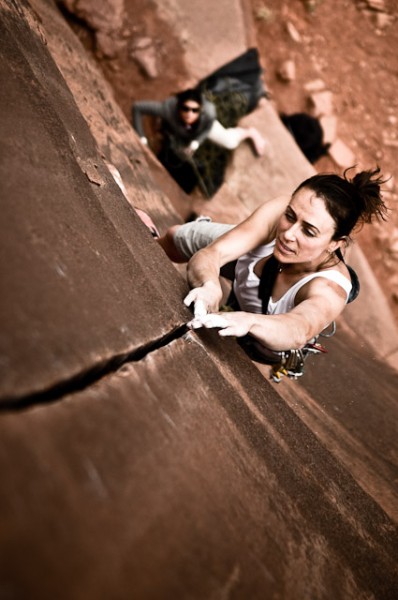
Finger cracks are more like face climbing in some ways, because there’s no getting around the fact that you will need to pull hard with your fingers at times. You’re not always going to be able to get all the weight on your feet like you can with tight hand to offwidth size cracks, unfortunately. Building finger strength, and realizing you will need to bear down just like you do on crimps, will help you out on finger cracks too.
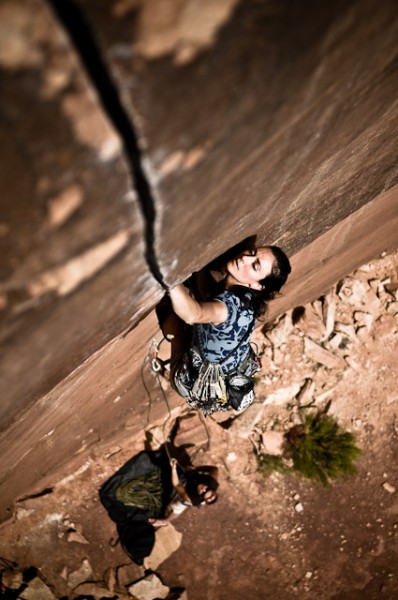
Still, your feet are the most important thing, as always! If you are climbing on granite fingercracks, there will be tons of small granite feet options, and you will probably be mostly using regular face footholds. If you are climbing on more splitter cracks like desert sandstone, you will need to use the crack a lot, as well as any little features you might find on the wall. Rather than your larger crack slippers (I’m now a Super Moccs convert!), use a tighter, more technical shoe for thin cracks. My best shoes for thin cracks are Projects and Anasazi LVs, because they are more precise and sensitive for tiny tiny footholds, which is key on the super thin cracks.
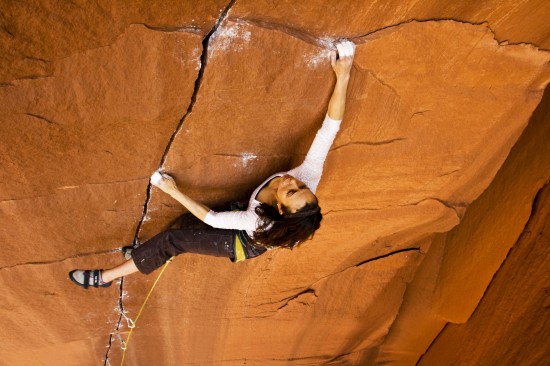
When you don’t find outside edges for your feet (but make sure to look all the time, because you will want to use them as much as possible!), you will need to use thin crack foot technique. This is almost exactly the same as normal crack foot technique, you just can’t get your actual foot in the crack, only the edge of the shoe rubber.
Lift your foot up high, somewhere around knee level, and press the outside edge of your foot against the crack. Now twist your knee straight, and grind/friction that outside edge of shoe against the crack while you are standing up on your foot. It actually does work.
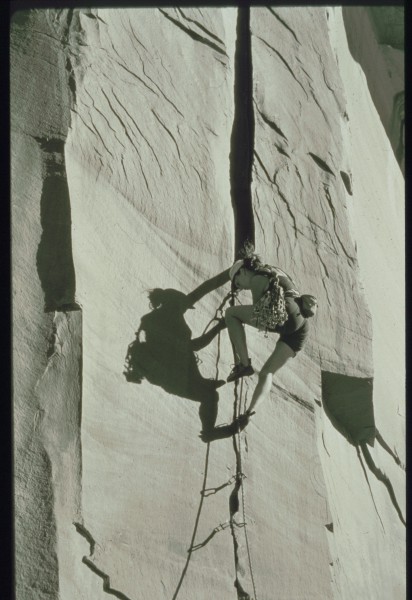
If you see any part of the crack that is slightly podded, make sure to use that instead of the more parallel parts. But if it’s pure parallel, just go for the crack foot. You will need to make sure you feel really locked in and strong with the finger locks when you are doing this crack foot technique, and will need to make long reaches to keep the finger locks kind of high. So this is very strenuous and powerful, compared to wider cracks.
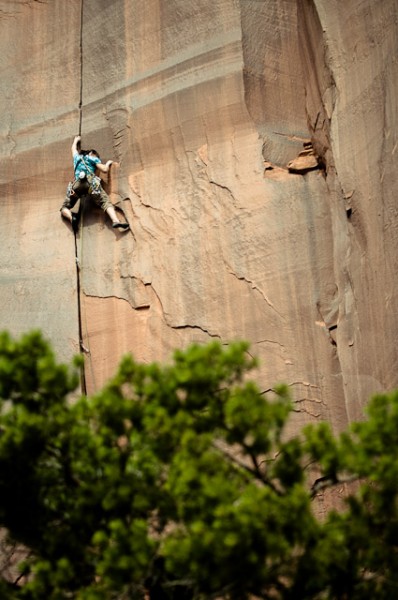
That being said, it’s rare to find such pure parallel finger cracks except in Indian Creek, and even still, most of them do have some relief in the form of sections of pods or small foot features on the wall. On granite or basalt, you’ll find nice finger slots (which translate to nice foot divets) and edges everywhere. Those climb a lot more “normally.”
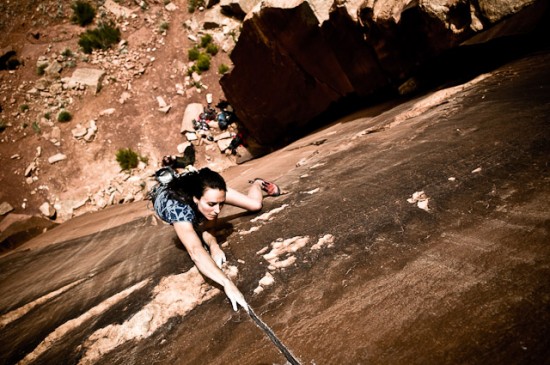
So you will need this technique when you find yourself in a pure splitter section, but always be looking for ways to supplement the crack with outside footholds or even grabbing small edges, because that’s going to be the case a huge percentage of the time on most thin finger cracks.
Have fun!
(Big thanks to Tommy Chandler and Backcountry.com for the great thin crack photos!)








Great beta on footwork and awesome photos (so relaxed)- perhaps some discussion of thumbs down vs. thumbs up, elbow positions to increase finger camming, and taping techniques for sizing/protection/blood flow would also be helpful?
Climb ON!
How does the super moccs sizing compared to the Moccasym
they size the same, and they have greater sensitivity. i love them!
Here’s a link to a very old article I wrote for Climbing Magazine, that could help with some of those questions:
http://www.lackhead.org/jamming/
thanks steph i tried all the techniques you described,best training i,ve ever had to learn how to fall off properly -love life take care.—harry (cornish)
What Routes are pictured? I think I recognize Learning to Fly, Sig Saur and perhaps Cyborg?
🙂 fairy tales, sig sauer, pink flamingo & learning to fly
Ooh those cracks look brutal! I always feel like I’m going to fall and leave my fingers in the crack! Lovely pics and a great blog.
I know, I’m always worried about that too when the locks are too good…! 🙂
where are these routes? cause… they look legit!
these routes are all at Indian Creek, at Pistol Whipped wall
Thank you for sharing this informative post!
finger strength